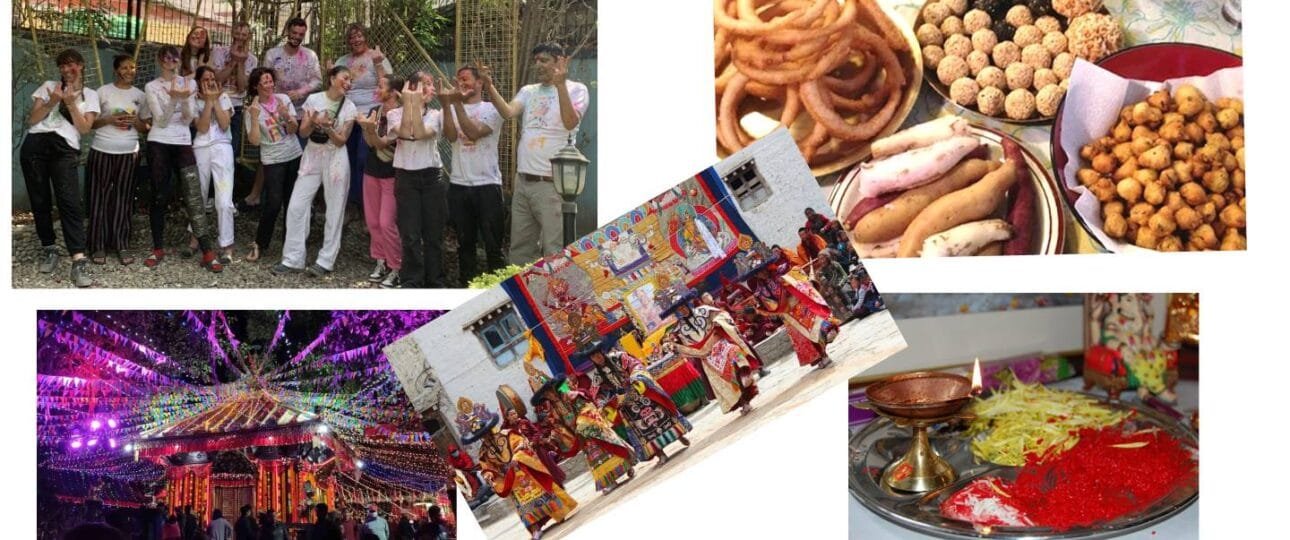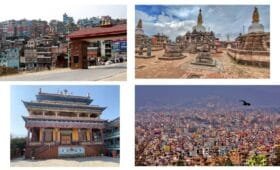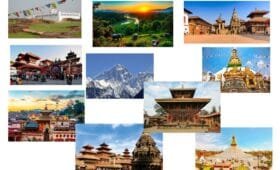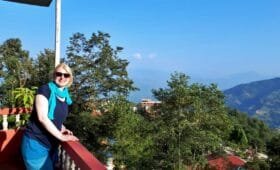Nepal, a country known for its stunning natural landscapes and majestic Himalayas, is equally celebrated for its rich and diverse cultural heritage. This small yet significant country is a melting pot of ethnic groups, languages, religions, and traditions. Nepal’s cultural heritage is a testament to its long history, spiritual traditions, and the vibrant practices that have evolved over centuries. In this article, we explore the cultural heritage of Nepal, its key components, and the factors that make it a unique and fascinating destination for travelers.
1. A Brief Overview Cultural Heritage of Nepal
Nestled between India and China, Nepal is home to more than 125 ethnic groups, speaking over 120 languages. This remarkable cultural diversity is reflected in Nepal’s festivals, traditions, and everyday practices. The country’s rich history spans thousands of years, with Hinduism, Buddhism, and indigenous traditions influencing the cultural practices of its people. Nepal’s cultural heritage can be witnessed through its architecture, festivals, art, music, and cuisine.
The Kathmandu Valley, in particular, is the heart of Nepal’s cultural heritage. This region contains some of the country’s most important historical and religious landmarks, including temples, stupas, and palaces. The importance of preserving these cultural treasures has led Nepal to adopt sustainable tourism practices to ensure that these traditions continue for generations to come.
2. Hinduism and Buddhism: The Spiritual Foundation of Nepalese Culture
Nepal’s cultural identity is deeply intertwined with the religious practices of Hinduism and Buddhism. These two religions have shaped the customs, rituals, and way of life of the Nepalese people, influencing everything from architecture to daily routines.
Hinduism in Nepal
Hinduism is the predominant religion in Nepal, and it is the state religion. Approximately 81% of the population practices Hinduism, and it plays a central role in shaping cultural norms and traditions. Nepal is home to some of the holiest sites in Hinduism, such as the Pashupatinath Temple in Kathmandu. This sacred temple, dedicated to Lord Shiva, attracts thousands of Hindu pilgrims from across the world. The temple complex, with its intricate carvings, sacred ghats, and the holy Bagmati River, stands as a symbol of Nepal’s deep spiritual heritage.
Nepal’s Hindu festivals, such as Dashain, Tihar, and Holi, are celebrated with great enthusiasm. Dashain, the largest Hindu festival in Nepal, marks the victory of good over evil and is celebrated with rituals, prayers, feasts, and family gatherings. Tihar, also known as the Festival of Lights, celebrates the bond between humans and animals, with special offerings made to cows, dogs, and crows.
Buddhism in Nepal
Buddhism, which originated in Nepal over 2,500 years ago with the birth of Lord Buddha in Lumbini, also plays a significant role in shaping the country’s cultural heritage. Today, around 9% of Nepal’s population practices Buddhism, and the country is home to many sacred Buddhist sites.
The Boudhanath Stupa in Kathmandu is one of the largest and most important Buddhist stupas in the world. It is a center of Tibetan Buddhism and attracts thousands of Buddhist pilgrims annually. Another notable Buddhist site is Swayambhunath, also known as the Monkey Temple, which offers panoramic views of the Kathmandu Valley and is an important symbol of Nepalese culture.
3. Nepali Architecture: A Blend of Tradition and Innovation
Nepali architecture is a remarkable fusion of Hindu, Buddhist, and indigenous elements. The ancient cities of the Kathmandu Valley, such as Kathmandu, Patan, and Bhaktapur, are famous for their intricate and beautifully crafted buildings, many of which are UNESCO World Heritage Sites.
Pagoda-Style Architecture
The pagoda-style architecture, characterized by multi-tiered, sloping roofs, is the hallmark of Nepali temple and palace design. The architecture of Pashupatinath Temple and Boudhanath Stupa reflects the intricate artistry and symbolism found in Nepalese buildings. The pagoda-style design is not only aesthetically pleasing but also functional, as the layered roofs help protect structures from the monsoon rains.
Newar Architecture
The Newar people are the indigenous inhabitants of the Kathmandu Valley, and their architectural style is one of the most distinctive features of Nepalese culture. Newar architecture combines wood, brick, and stone to create intricately designed buildings, such as the Durbar Squares of Kathmandu, Bhaktapur, and Patan. These squares are filled with temples, palaces, and shrines that showcase the craftsmanship of the Newar people, with detailed wood carvings, statues, and paintings.
4. The Vibrancy of Nepali Festivals
Nepal is a land of festivals. Throughout the year, the country celebrates a range of religious, cultural, and seasonal festivals, each with its own unique customs, rituals, and significance. Festivals in Nepal are not just about religious observance; they are an opportunity for communities to come together, celebrate, and strengthen their bonds.
Dashain Festival
Dashain is the most widely celebrated festival in Nepal, and it is a time for families to reunite, honor ancestors, and celebrate the triumph of good over evil. During Dashain, people worship the goddess Durga and her manifestations, and the festival includes prayers, sacrifices, and the exchange of blessings and gifts.
Tihar Festival
Tihar, also known as the Festival of Lights, is celebrated five days after Dashain. It honors the bond between humans and animals, and on different days, various animals like dogs, cows, and crows are worshipped. Homes are decorated with candles and oil lamps, creating a warm and festive atmosphere.
Lhosar (Tibetan New Year)
Another significant festival in Nepal is Lhosar, the Tibetan New Year, celebrated by Nepal’s Tibetan community. It marks the start of a new year in the lunar calendar and is celebrated with feasts, dances, and rituals to honor ancestors and seek blessings for the year ahead.
5. Nepali Cuisine: A Culinary Expression of Culture
Nepali cuisine is a reflection of the country’s diverse ethnic groups and regional flavors. The food of Nepal is often prepared with simple, fresh ingredients, yet it is rich in flavor and nutrition. One of the most popular dishes is dal bhat, which consists of lentil soup served with rice and accompanied by vegetable curries and pickles. Other common dishes include momo (steamed dumplings), sel roti (a traditional rice doughnut), and gundruk (fermented leafy greens).
Food plays an important role in Nepali festivals and family gatherings. During festivals like Dashain and Tihar, families prepare special dishes and share meals together as a symbol of unity and gratitude.
6. Traditional Music and Dance: The Rhythms of Nepal
Music and dance are essential elements of Nepalese culture, with each ethnic group contributing its own distinct traditions. The madal, a type of drum, is a common instrument used in Nepali folk music, and it is often accompanied by the sarangi (a stringed instrument) or the bansuri (flute).
Folk dances such as the Newar Dance, Tharu Dance, and Sherpa Dance are performed during festivals and social gatherings. These dances are a celebration of the cultural identity of different groups in Nepal, and they are often accompanied by traditional songs that tell stories of local myths, history, and everyday life.
7. Nepal’s World Heritage Sites: Preserving Cultural and Natural Legacy
Nepal is home to several UNESCO World Heritage Sites, both cultural and natural, that showcase the richness of its cultural heritage and natural beauty. The Kathmandu Valley alone is home to seven UNESCO-listed sites, including the Pashupatinath Temple, Boudhanath Stupa, Swayambhunath, and the Durbar Squares of Kathmandu, Bhaktapur, and Patan. These sites are a testament to Nepal’s historical and cultural importance, not only in the context of South Asia but also globally.
Another significant World Heritage Site is Lumbini, the birthplace of Lord Buddha, which draws millions of pilgrims and tourists each year. Nepal is also home to Chitwan National Park, a UNESCO Natural World Heritage Site, which is famous for its biodiversity and the conservation of endangered species like the Bengal tiger and one-horned rhinoceros.
For more information on Nepal’s UNESCO World Heritage Sites, visit the official UNESCO page on Nepal.
Conclusion: The Enduring Legacy of Cultural Heritage of Nepal‘s
Nepal cultural heritage is a fascinating mix of ancient traditions, spiritual practices, and artistic expression. From the magnificent temples and stupas to the vibrant festivals and rich culinary traditions, Nepal offers a deep cultural experience for travelers and locals alike. The preservation of Nepal’s cultural heritage is essential to maintaining the country’s identity, and it continues to inspire both those who visit and those who call Nepal home. For anyone looking to explore the intersection of history, culture, and spirituality, Nepal is an unparalleled destination that leaves an indelible mark on the heart and mind.




